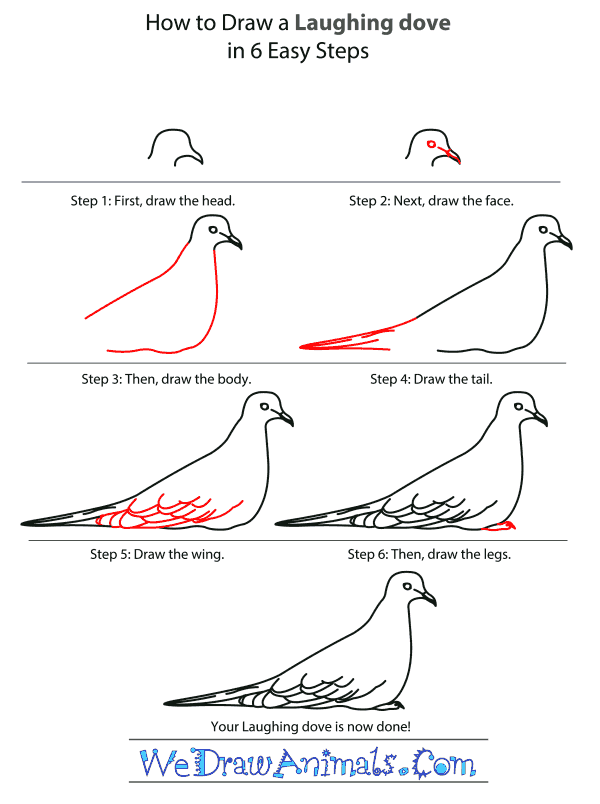In this quick tutorial you'll learn how to draw a Laughing Dove in 6 easy steps - great for kids and novice artists.
The images above represent how your finished drawing is going to look and the steps involved.
Below are the individual steps - you can click on each one for a High Resolution printable PDF version.
At the bottom you can read some interesting facts about the Laughing Dove.
Make sure you also check out any of the hundreds of drawing tutorials grouped by category.
How to Draw a Laughing Dove - Step-by-Step Tutorial
Step 1: Draw the head, which ends in a pointed beak.
Step 2: Add a circle for the eye, and a line that goes across the face and just below the eye for the beak
Step 3: Draw the rest of the body, which comes all the way down to the ground.
Step 4: Add the tail. Add lines for detail
Step 5: Draw multiple overlapping half-circles for the wings
Step 6: Add a small circle-like shape for the legs.
Interesting Facts about the Laughing Dove
The laughing dove can be from southern Africa to Asia and as far east as India. It also lives in Australia. The laughing dove lives in woodlands and savannas but is also seen around human habitations. It gets its name from its vocalizations which sound like human laughter. The laughing dove grows to about 25 centimeters in length, has a wingspan of about 40 centimeters, and weighs about 100 grams. This bird feeds on seeds, fruits, and small insects. The laughing dove is monogamous and tends to return to the same nesting site every year. Nests are usually built in a fruit tree.
Did you know?
- The laughing dove is also known as an Indian little brown dove, laughing turtle-dove, palm dove, or Senegal dove.
- This bird is usually seen individually or in pairs. However, flocks may gather at roosting spots, watering areas, or spots with an abundance of food.
- Females lay two eggs an average of six times a year. Both the male and female incubate the eggs for up to two weeks.
- There are no known significant threats to the laughing dove.
- The laughing dove is in the Order Columbiformes and the Family Columbidae.
Lesson plan note: Play bird sounds for your children to listen to. You can purchase recordings or search the internet for bird songs. Then, have each child try to duplicate the sounds that they hear. Notice how different species have differing vocalizations.







